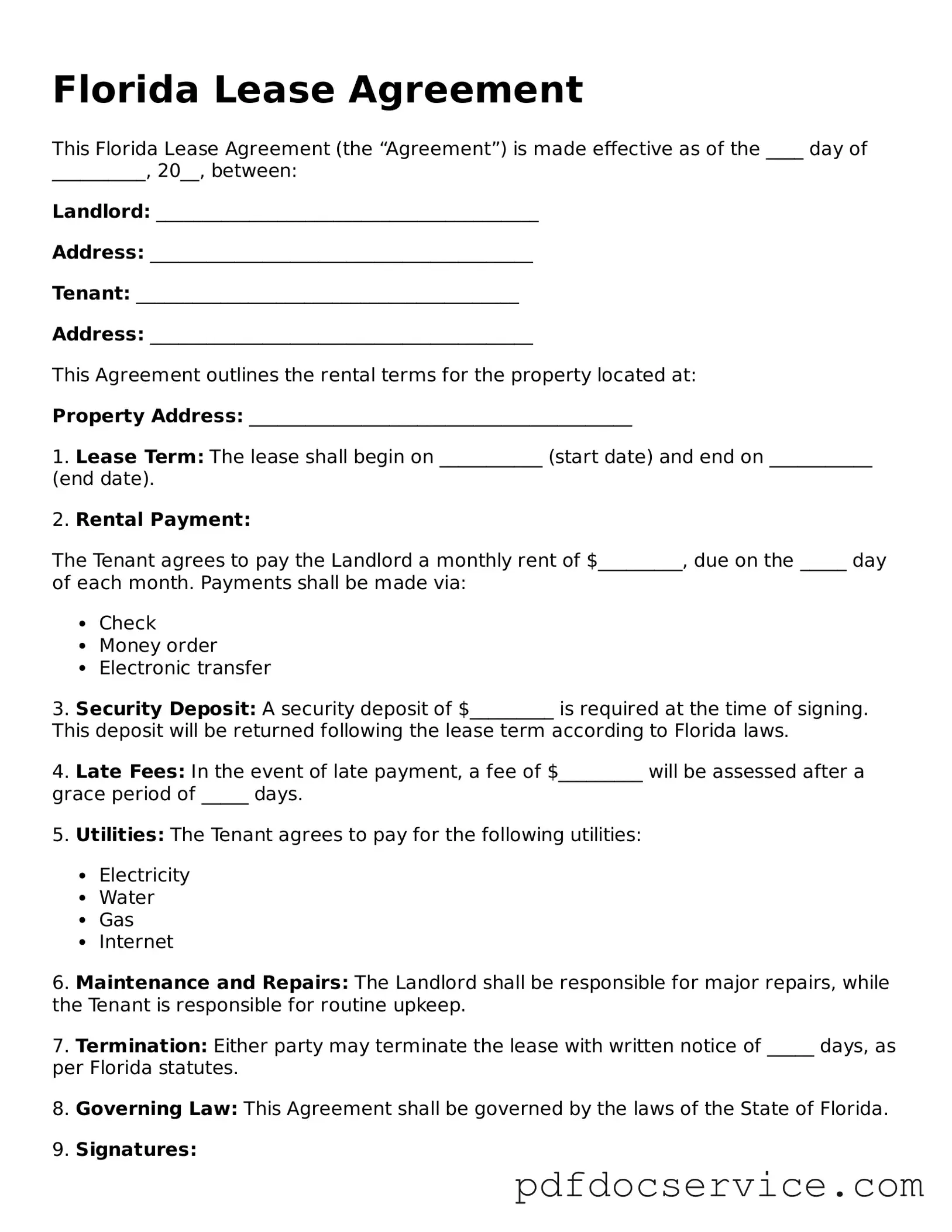Printable Lease Agreement Template for Florida
A Florida Lease Agreement form is a legal document that outlines the terms and conditions under which a landlord rents property to a tenant. This form serves as a crucial tool for both parties, ensuring that their rights and responsibilities are clearly defined. Understanding its components is essential for anyone involved in a rental situation in Florida.
Open Lease Agreement Editor
